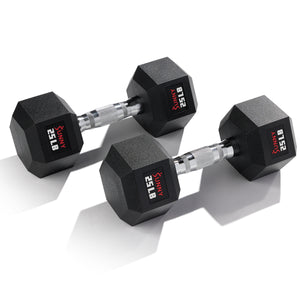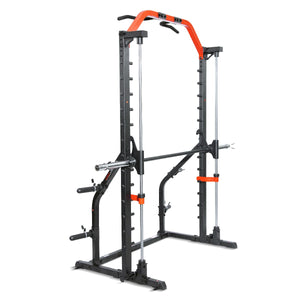Sitting at a desk all day is accompanied by many first-world afflictions: Bad posture, inactivity, and stress headaches, to name a few. Another concern that isn’t on your radar (but definitely should be) is weak glutes. Sitting for long periods of time can specifically weaken your glute medius, a small muscle that resides below the gluteus maximus.
Here’s everything you need to know about your gluteus medius, including why it’s so important, and how to strengthen it to reduce pain.
What is the Gluteus Medius?
The gluteus medius works together with the gluteus minimus to help support and stabilize your hip (1). It helps to move your leg out to the side and away from your body in a movement called hip abduction, and serves to rotate your thigh (2). The gluteus medius is important when you’re walking. Specifically when you’re standing on one foot, and swinging the other one forward, your gluteus medius helps to keep your pelvis level.
Why It’s Important to Strengthen Your Gluteus Medius
When your gluteus medius is working well, you can move well. It helps to stabilize your hips, which serve as the foundation of your spine. If that foundation is off, it can result in lower back pain. Your hips are also a touch point for the knee and ankle joint below—which means if your gluteus medius is unable to stabilize your hip, it can affect your knee, ankle, and foot positioning below.
For example, failure of your glute medius to contract and stabilize your hip when walking can result in gait abnormalities (3). Weakness in your glute medius may cause your thigh to angle inwards while walking, running, and jumping (4). This can place excessive stress on your knee and ankle and can increase your risk of injury.
One review found that a weak glute medius can indirectly contribute to many other lower extremity problems like knee problems, and hip pain (5). The TL: DR: a weak glute med might be the answer for your unexplained back, hip, knee, or ankle problems.
How to Activate Your Gluteus Medius
Want to strengthen your glute medius? Easy, give these exercises a go.
Banded Barbell Hip Thrust
The hip thrust is the single best exercise to build strength in your glutes as a whole. One study found it isn’t too shabby at activating the gluteus medius either (6). To up the challenge on the gluteus medius, throw a resistance band around your thighs. Your glute medius will have to activate to hold the band in place.
How to:
- Sit with your back against the edge of a bench with your knees bent.
- Position a resistance band around your thighs, just above your knees. Press your knees out to hold the band in place.
- Put a loaded barbell over the crease in your hips.
- Tuck your chin, activate your core, and push your feet into the ground to drive your hips forward
- Keep driving up until your hips are fully extended.
- Pause at the top, slowly lower, and repeat.
Banded Hip Abduction
Dig into the gluteus medius specifically by doing banded hip abductions. Whether you bend your legs to do some active clamshells, or do this side-lying straight leg variation you can be sure you’re firing up the gluteus medius.
How to:
- Lie on the ground on one side, with your head on the ground or resting on your elbow.
- Loop a resistance band around your ankles.
- Lift your top leg up as high as you can, driving your energy through your heel, and rotating your leg slightly inward so your toes point towards the ground and your heels towards the sky.
- Slowly lower your leg and repeat.
Single Leg Deadlift
One of the best ways to functionally strengthen your glute medius is to challenge it in single leg exercise variations like lunges, squats, and deadlifts. Try a single leg deadlift, which is the easiest of the bunch to get down. By taking a B stance, with your leg in focus directly below you, and your other leg as a kickstand you can work on your form and strength as you build the stability in the hip to eventually lift that back leg off the ground.
How to:
- Grab a light pair of dumbbells (and add on weight once you’ve got the form down).
- Stand with your hips facing forward, core locked into place (pelvis tucked and ribs down), and shoulders rolled down and back.
- Shift your weight into one foot as you lift the other foot off the ground and position it a few inches behind you as a kickstand with just a little bit of weight in your toes for stability.
- Lower the weights to mid-shin, shaving your legs with the dumbbells. Lower until you feel a nice stretch in your hamstring.
- Then, push through the heel of your front leg to return to standing.
1. Whiler, L. et al (2017). Gluteus Medius and Minimus Muscle Structure, Strength, and Function in Healthy Adults: Brief Report. https://utpjournals.press/doi/10.3138/ptc.2016-16. Accessed 25 May 2023.
2. Flack, N. et al (2011). A Review of the Anatomy of the Hip Abductor Muscles, Gluteus Medius, Gluteus Minimus, and Tensor Fascia Lata. https://onlinelibrary.wiley.com/doi/10.1002/ca.22004. Accessed 25 May 2023.
3. Pirker, W. et al (2016). Gait Disorders in Adults and the Elderly. https://link.springer.com/article/10.1007/s00508-016-1096-4. Accessed 25 May 2023.
4. Moon, H. et al (2015). Leg Weakness Caused by Bilateral Piriformis Syndrome: A Report. https://www.e-arm.org/journal/view.php?doi=10.5535/arm.2015.39.6.1042. Accessed 26 May 2023.
5. Buckthrope, M. et al (2019). Assessing and Treating Gluteus Maximus Weakness—A Clinical Commentary. https://www.ncbi.nlm.nih.gov/pmc/articles/PMC6670060/. Accessed 26 May 2023.
6. Neto, W. et al (2019) Barbell Hip Thrust, Muscular Activation and Performance: A Systematic Review. https://pubmed.ncbi.nlm.nih.gov/31191088/. Accessed 26 May 2023.




























Add Your Name & Email
Please enter your name and email to continue.We won’t display your email publicly.